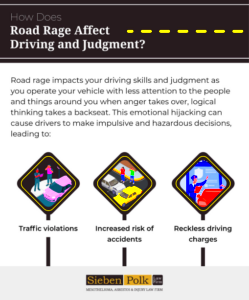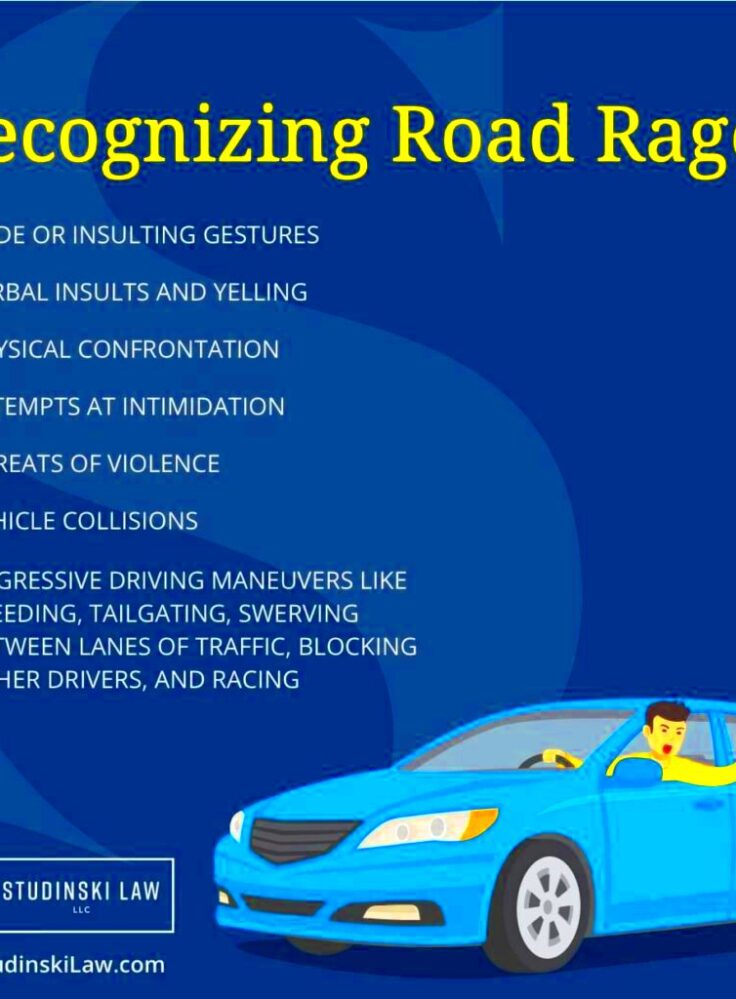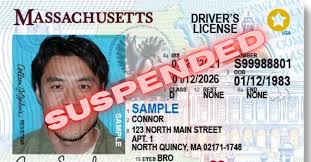Understanding Road Rage Laws
The highway on the whole has become too much of a scene for road rage, with over stress and very impatient drivers showcasing their tempers in dangerous ways. In response to the situation, many states have established particular road rage laws so as to avert car accidents. They mainly aim at punishing aggressive behavior while driving which can cause an accident or lead to physical violence. Knowing about these laws is important for both drivers as well as any person wishing to drive safely.
What Constitutes Road Rage?

Hell hath no fury like a driver scorned or angry motorist -such is the popular belief and many people take it literal because road rage is not only restricted to yelling or honking at other motorists. There is more than one kind of this dangerous behavior which could lead to accidents on the highways I’m talking about here:
- Tailgating: Driving too closely behind another vehicle to intimidate the driver.
- Sudden Braking: Hitting the brakes unexpectedly to force another vehicle to stop.
- Speeding: Driving well above the speed limit out of frustration.
- Cutting Off Other Drivers: Swerving into lanes without warning to block or frustrate other vehicles.
- Physical Confrontation: In extreme cases, drivers may even leave their vehicle to confront another driver physically.
Legally, road rage overlaps with aggressive driving however their main distinction is found in the underlying motivation behind the actions. While aggressive driving may not always be intended therefore seen as unintentional behavior; road rage on the other hand purposefully seeks harm or intimidation towards others using a vehicle.
Types of Road Rage Incidents

Unprovoked aggression on the road can take several forms. They all begin with just a mere word or gesture, but depending on how you react, it may turn out to be nothing more than a warning or becomes fatal in an instant. Here are the most frequent types of road rage cases:
- Verbal Confrontations: This involves shouting, honking, or making offensive gestures toward other drivers. While it may seem harmless, verbal aggression can quickly spiral into something more dangerous.
- Intentional Collisions: Some drivers may go as far as to purposely bump or ram another vehicle. This is not only dangerous but can lead to serious criminal charges.
- Chasing Another Vehicle: In some cases, road rage leads to drivers following one another for miles, creating a high-speed chase that endangers everyone on the road.
- Blocking the Road: Angry drivers may use their vehicles to block traffic or prevent another car from merging, which can escalate into a hazardous situation.
- Physical Altercations: The worst-case scenario is when drivers step out of their vehicles to engage in physical fights, often escalating an already tense situation.
From hefty fines to possible jail time, there are serious legal consequences that would accompany any of these behaviors. The penalty severity often depends on the extent of injury or harm that is involved and the degree of aggression in the incident.
Legal Penalties for Road Rage
Not only does road rage pose a threat but it’s also subjected to weighty penalties by law. Most states have diverse regulations regarding road rage although they are generally considered serious crimes that may fall under reckless driving or assault. Depending on how severe the act was or if it resulted in injuries or damages different states offer different levels of punishment for road rage acts. However, common legal implications for this behavior include:
- Fines: Minor road rage incidents, such as verbal aggression or tailgating, often result in fines. These can range from a few hundred to several thousand rupees, depending on the state and situation.
- License Suspension: In cases of aggressive driving that endangers others, authorities may suspend the driver’s license, often for several months.
- Jail Time: More serious road rage incidents, especially those that result in physical harm or property damage, can lead to jail time. In some states, offenders can face up to a year in prison.
- Community Service: In lieu of or in addition to other penalties, offenders might be ordered to complete a certain number of hours in community service.
- Increased Insurance Premiums: Beyond the legal penalties, road rage convictions almost always result in higher car insurance premiums.
In the cases that are very grave, especially when road anger leads to violence or car homicide, the charges may cover serious offenses that could lead to life sentences and a lifelong sentence for crime. This means that road anger is an act of emotional outburst and does not have temporary legal issues.
How Road Rage Affects Other Drivers
The fact that the driver may not be the only person who suffers from road rage is something worth noting because it is a phenomenon that has ripple effects and affects almost everyone who is on the roads. Once an individual has taken to behave aggressively while driving, then it may be possible for others driving around him or her to become scared and hence they will react out of fear leading to confusion and this makes driving unsafe. Here’s how road rage affects others:
- Increased Anxiety: Aggressive behavior on the road can make other drivers nervous, leading to mistakes like sudden braking or swerving, which can cause accidents.
- Distracted Driving: Drivers witnessing road rage may focus more on the aggressive driver than the road, taking their attention away from safe driving practices.
- Chain Reaction Collisions: If one driver suddenly stops or swerves due to road rage, it can cause a domino effect, leading to multi-car pile-ups or rear-end collisions.
- Escalation of Conflict: Some drivers may retaliate, leading to an escalation of aggressive behavior, turning a minor altercation into a dangerous situation.
- Legal Trouble for Innocent Drivers: If an aggressive driver causes an accident, other drivers involved might face legal or insurance disputes, even if they weren’t at fault.
The end result of aggression on the road is an unfavorable surrounding capable of endangering all individuals involved. A peaceful and collected motorist will nonetheless feel threatened and may be vulnerable to danger when faced with someone who is enraged from behind the wheel.
Steps to Take if You Are a Victim of Road Rage
In the event that you become a target of fury on roadways, it is crucial to keep your composure and take measures in order to safeguard yourself. Therefore, this are the actions you need to take:
- Do Not Engage: It can be tempting to react to an aggressive driver, but engaging—whether by honking, yelling, or making gestures—can escalate the situation. Stay calm and avoid any interaction with the other driver.
- Distance Yourself: Try to safely put distance between yourself and the aggressive driver. Change lanes, slow down, or even exit the highway if necessary to avoid the confrontation.
- Call the Police: If the situation becomes dangerous, don’t hesitate to call the police. Provide them with details like the make and model of the other vehicle, the direction they’re headed, and any notable aggressive behavior.
- Document the Incident: If possible, take note of the time, location, and details of the incident. If the road rage resulted in a collision, this documentation will be important for any legal or insurance claims.
- Do Not Go Home: If you believe the aggressive driver is following you, do not go to your home. Instead, drive to a public place, like a police station, and seek help.
Although it may be terrifying for you if someone gets angry at your driving, remain composed and follow these guidelines in order to get out of the mess without causing an accident. The most important thing is that your life comes first before arguing with an aggressive motorist.
Defensive Driving Tips to Avoid Road Rage
Despite road rage being abnormal in nature, defensive driving can keep you cool at all times while reducing chances that someone else becomes aggressive. Here are a few ways to averting any such scenarios.
- Stay Calm: No matter how frustrating traffic can be, it’s important to keep your cool. Take deep breaths, and remind yourself that getting angry won’t solve the situation.
- Keep a Safe Distance: Always maintain enough distance between your car and the one ahead of you. Tailgating is a major trigger for road rage and could provoke the driver in front.
- Avoid Eye Contact: If you encounter an aggressive driver, avoid making eye contact, as this could escalate the situation. It’s best to keep your focus on the road.
- Let Aggressive Drivers Pass: If someone is driving aggressively, don’t try to block them or engage. Simply move over and let them go. Your priority should be safety, not proving a point.
- Plan Your Route: Avoid high-traffic areas when possible. If you’re not rushed, you’re less likely to get frustrated or feel pressured by aggressive drivers.
- Use Signals Properly: Always signal when you’re changing lanes or making a turn. Sudden moves without warning can frustrate other drivers and cause conflict.
When you apply the outlined tricks, you will escape being a casualty of anger behind the wheels while at the same time promoting secure and tranquil driving for all.
Common Misconceptions About Road Rage Laws
Road rage laws are associated with a number of myths and these beliefs may cause drivers to treat their actions lightly. Below are illustrations of frequent misunderstandings:
- “Road rage is just a traffic offense.” Many believe road rage is just a minor infraction, similar to a speeding ticket. However, depending on the severity, road rage can lead to serious charges like assault, reckless driving, or even manslaughter.
- “Road rage incidents don’t go on my permanent record.” False. Road rage incidents can result in criminal charges, meaning a conviction will go on your criminal record, not just your driving record.
- “It’s only road rage if I physically attack someone.” While physical violence is the most extreme form of road rage, verbal aggression, tailgating, and dangerous driving are all forms of road rage, which can lead to legal consequences.
- “If no one gets hurt, there are no serious penalties.” Even if no one is physically harmed, road rage can still lead to hefty fines, points on your license, or a suspension of your driving privileges.
These misunderstandings help motorists treat road fury more earnestly, thus lessening the chances of indulging in life-threatening actions behind the wheels.
Frequently Asked Questions About Road Rage Laws
Below are a few of the frequently asked questions with respect to the rules concerning road rage:
| Question | Answer |
|---|---|
| Is road rage considered a criminal offense? | Yes, road rage can be classified as a criminal offense, especially if it involves dangerous driving, physical harm, or threats. The charges can range from misdemeanors to felonies, depending on the severity of the incident. |
| Can road rage affect my insurance rates? | Yes, road rage incidents can significantly increase your insurance premiums. Aggressive driving and reckless behavior are seen as high-risk factors by insurance companies. |
| How can I prove I was a victim of road rage? | If you are a victim of road rage, it’s important to document the incident. This includes taking note of the driver’s license plate, any witness information, and reporting it to the police immediately. If there are cameras nearby, that footage could also serve as evidence. |
| Are there any self-defense laws in place for road rage incidents? | Self-defense laws do apply in road rage incidents, but only in situations where your life or well-being is in immediate danger. It’s crucial to avoid escalating the situation and leave the scene whenever possible. |
Although these FAQs contain primarily general information, they are limited because road rage laws differ from one state to another hence consultation with an attorney in particular matters is always recommended.
Conclusion: Staying Safe on the Road
Road rage is a serious problem that can ruin in a big way everyone participating in it. We can play our roles in creating safer road conditions if we avoid expressing anger, utilize defensive driving strategies, as well as understand legal ramifications associated with such cases. Patience and self-discipline are the most critical aspects whether you are managing assertive motorists or making sure that you do not transform into one yourself. Keep in mind that not even the most wanted destination is worth losing your life for or putting other people’s lives at stake on the highway. So let us strive to drive with sense and maintain order on our roads so that all drivers remain safe.


